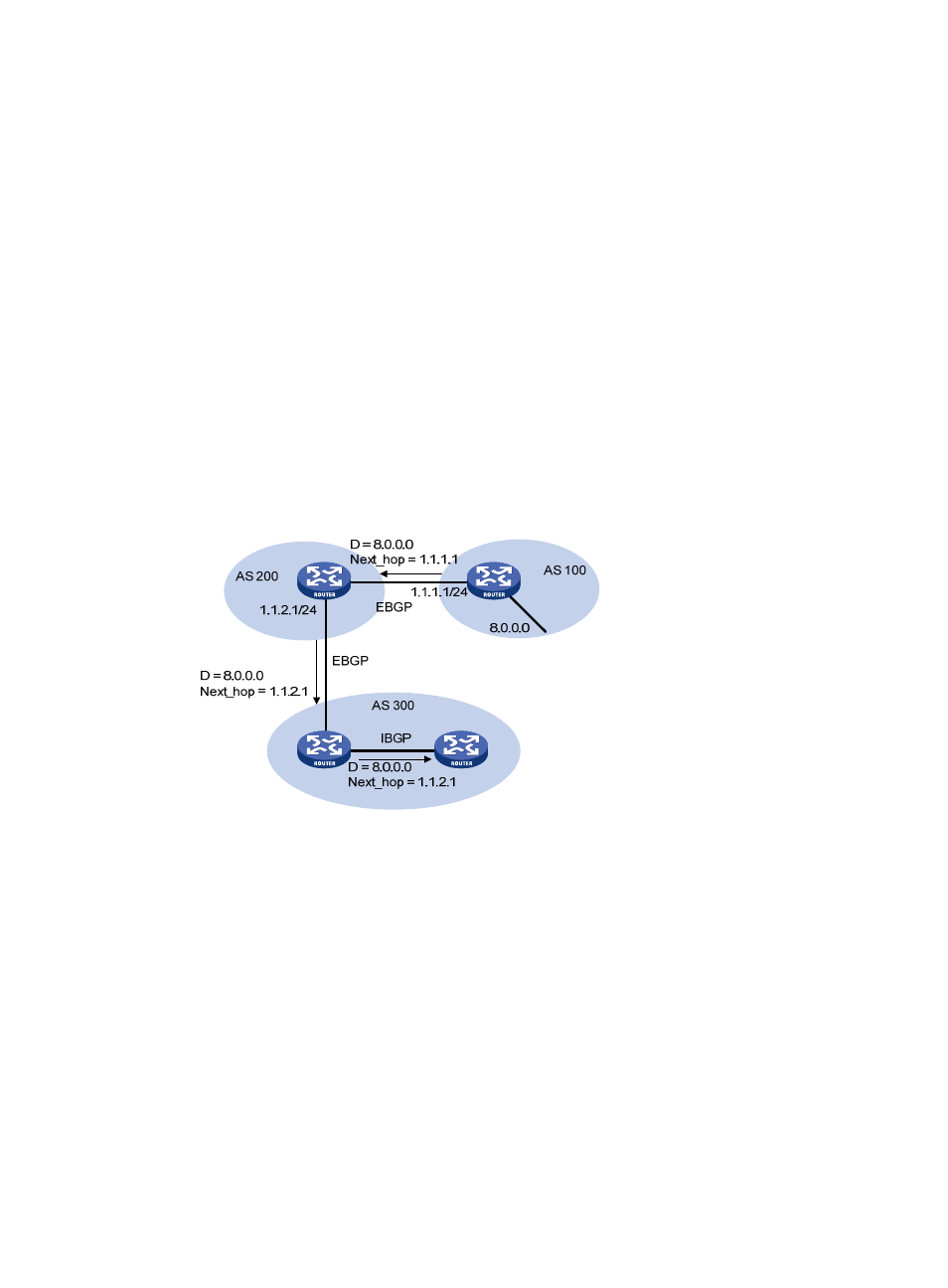H3C Technologies H3C S12500 Series Switches User Manual
Page 210

194
{
Affect route selection—BGP gives priority to the route with the shortest AS_PATH length if other
factors are the same. As shown in
, the BGP router in AS 50 gives priority to the route
passing AS 40 for sending data to the destination 8.0.0.0. In some applications, you can apply
a routing policy to control BGP route selection by modifying the AS_PATH length.
{
Filter routes—By configuring an AS path filtering list, you can filter routes based on AS numbers
contained in the AS_PATH attribute. For more information about routing policy and AS path
filtering list, see "Configuring routing policies."
•
NEXT_HOP
The NEXT_HOP attribute is not necessarily the IP address of a directly connected router. It involves
the following types of values, as shown in
.
{
When advertising a self-originated route to all BGP peers, a BGP speaker sets the NEXT_HOP
for the route to the address of its sending interface.
{
When sending a received route to an EBGP peer, a BGP speaker sets the NEXT_HOP for the
route to the address of the sending interface.
{
When sending a route received from an EBGP peer to an IBGP peer, a BGP speaker does not
modify the NEXT_HOP attribute. If load balancing is configured, the NEXT_HOP attribute of the
equal-cost routes will be modified. For load balancing information, see "
Figure 74 NEXT_HOP attribute
•
MED (Multi-Exit Discriminator)
The MED attribute is exchanged between two neighboring ASs, each of which does not advertise
the attribute to any other AS.
Similar to metrics used by IGP, MED is used to determine the best route for traffic going into an AS.
When a BGP router obtains multiple routes to the same destination but with different next hops
from different EBGP peers, it considers the route with the smallest MED value the best route given
that other conditions are the same. As shown in
, traffic from AS 10 to AS 20 travels
through Router B that is selected according to MED.
